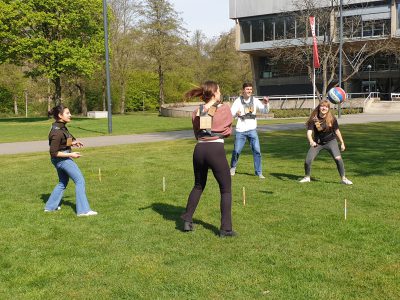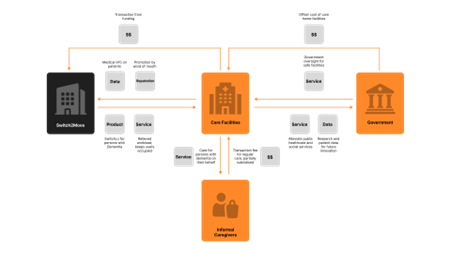Portfolio | Charèlle Polderman
Development in the areas of expertise
Design & Research Process
The methodologies and approaches that I use to explore and develop design solutions include the integration of user-centered design principles and thoughtful design, ensuring that the product is functional and effective. I emphasize the importance of involving both users and stakeholders throughout the process, to make sure the design meets the needs and expectations of all parties. I use both qualitative and quantitative data to gather insights, validate concepts, and refine designs, ensuring that products are aligned with the desired outcomes. By combining creative design thinking and research techniques I aim to create designs that are both helpful and easy for people to use.
User & Society
In this area psychology and design meet, which aligns closely with my interests and professional identity. This area emphasizes user involvement in every part of the design process to ensure products meet users’ needs. Without a user-centred approach, concepts may result in nice ideas that make no sense to people who need to use them. My first experience in this area, highlighted the importance of scenarios, personas, and user testing to determine the problem and gain feedback on your product. During the past years, I organized an A-B testing to evaluate which game evokes more empathy – a VR gaming experience or a conventional one. I took responsibility for organizing the user test for Sport-I to evaluate the usability of different prototypes. Last semester I integrated multiple user studies in my design approach. This enriched user engagement throughout my design process. I organized a magic machine workshop and a co-design session at the very beginning from which I gained many insights and a lot of inspiration. Later I evaluated my concept through a short usability interview and to conclude I tested the final concept through a diary study.






Creativity & Aesthetics
The visual and tactile appeal of a product is crucial, as it forms the first impression. A product that looks attractive and well-designed is more likely to capture attention and interest. Additionally, interacting with a product should be aesthetically pleasing. Understanding branding and ensuring a coherent look and feel for a product, including its packaging and related elements, are essential aspects in this area to me. Skills like sketching and CAD modelling allow communicating ideas and exploring different angles, shapes or materials. My exchange allowed me to follow a material-driven design process where I explored working with various materials, creating a corporate gift made out of the waste material of a company. During my final bachelor project, DIMMED, I used sketching to generate ideas individually and organized workshops with low-fidelity prototyping to inspire creativity.






Business & Entrepreneurship
Competency in this area is important for making strategic decisions to steer and evaluate your project. For example, I applied a value framework to identify key aspects of a product and find areas for improvement. Tools like the problem-solution fit or MVP canvas helped me identify new target audiences for Bondy. Additionally, SWOT-analyses and customer journey maps were effective in revealing opportunities and weaknesses in the current situation or my concepts.
Creating a BOI for Switch2Move provided insights into the stakeholders involved and the contributions and benefits each stakeholder receives in the development of a product.
Maintaining professional contact and engaging stakeholders during the design process is another critical skill that I developed during the projects Bondy, Switch2Move, DIMMED, and InMotion. My leadership qualities further support my expertise in this area.




Technology & Realization
This competency area includes building apps in Figma and creating physical prototypes (with integrated electronics). I developed skills in linking software and hardware, demonstrated by building a central heating system with temperature control and an LED indicator, as well as a digital game with a physical controller. Collaborating with mechanical engineers on the Stabilifer project was also my first exposure to CAD modeling and integrating electronics into prototypes.
During my exchange, I was able to dive deeper into this area. I learned about different manufacturing processes and applied this knowledge to design products like a chair with an adjustable backrest, ensuring it met functionality and safety requirements. I also improved my CAD modeling skills and gained experience in analyzing and optimizing mechanical systems to ensure they could handle stress and movement. In the DIMMED project, I took on the challenge of CAD modeling, selecting electronics, and integrating them into the final prototype. These experiences strengthened my ability to bring together programming, electronics, and mechanical design into functional, well-rounded prototypes.





